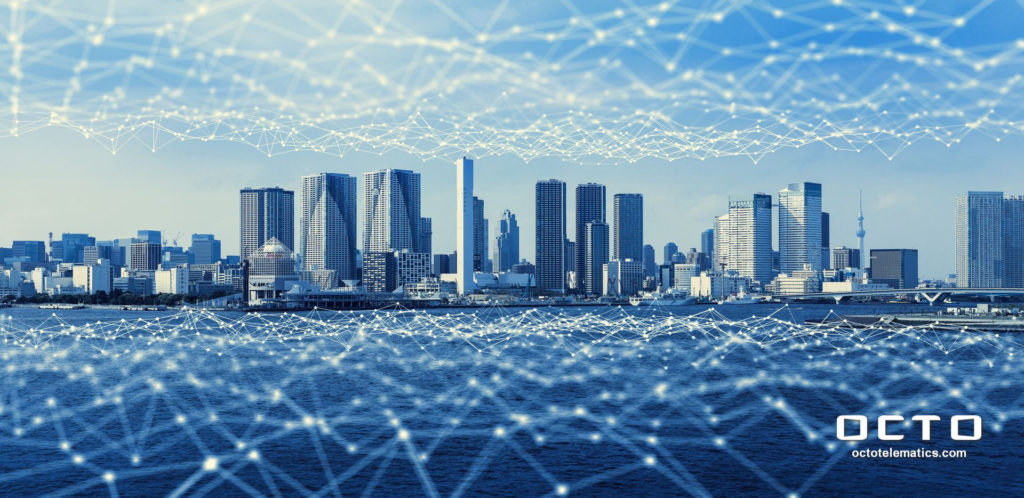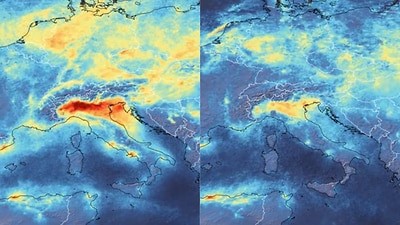
Cities only take up a small part of the world but they generate the largest chunk of global GDP. And the importance of cities is growing, with more and more people moving to areas. Smart cities can improve the daily lives of everyone living in urban areas.
“As cities grow and evolve, our model of the ideal city also needs to transform,” said Tina Martino, Head of Strategic Marketing and Intelligence at OCTO. “The concept of the ideal place where we want to live and the services we need to make that happen, need to change.”
By 2050 close to 70% of the world’s inhabitants will live in cities. To accommodate this trend cities need to adapt. If cities want to remain attractive and sustainable places where people want to live and work, they need to embrace technology.
“At OCTO we see it as our responsibility to support a better and easier life for people. And thanks to our connected technology we can serve people, make society smarter and live better”, is Tina Martino clear.
The first urban problem technology can help us solve is that of traffic and mobility, including associated issues like pollution and accidents which are directly correlated. And OCTO Telematics has just the right tools to do that.
Even if we’re working from home, as many of us are doing now, we still need to move about and around. Tina Martino explained: “This means we need to find smart solutions to adjust traffic flows and to guarantee everyone’s mobility. Smart cities understand how people are moving and where, when they are entering traffic wasting time to park, what routes they are taking, leading to an infrastructure that guarantees a seamless and sustainable multimodal mobility for both citizens and visitors.”
Connected cars are the sensors to provide information needed to understand the movement of people and represent a proxi of society future needs. Today, the penetration of connected cars has reached a point where it is large enough to feed their data into algorithms and artificial intelligence, characterizing collective movement over a territory, detecting and contestualizing events like crashes, studying their distributions to evaluate impacts and risks. This is the way to predict future traffic flows. Once you can measure the collective mobility, you can predict traffic, you can start thinking about managing urban movements and traffic more efficiently.
But when we look below the national level, it is the world’s major cities that are the powerhouses of global growth. Teeming with industry and services, brimming with innovation, and home to swelling and increasingly more skilled and diverse labour forces, the world’s 750 biggest cities today account for some 57% of global GDP. By 2030 the 750 look set to contribute close to a staggering US$80 trillion to the world economy (61% of total world GDP) and, with it, offer vast commercial opportunity for those who can serve their needs in everything from office space to cooking oil.
COVID-19
When COVID-19 first hit Italy in the spring of 2020, images of the European Space Agency showed to what extent pollution levels went down and all the European city experienced the same situation.

Keeping track of traffic flows was also necessary to contain the impact the spread of the virus. To this aim, OCTO Telematics was able to provide information to support a comprehension of the phenomen with data and analyses available in its publicly shared “Mobility Data Lab, a dashboard informing everyday about the vehicle flows across the regions and cities of Italy.
A better understanding of traffic flows has immediate benefits on other different areas. For example it allows carsharing companies to better position their stations for vehicles based on the places in the city where people are more used to stop. Charging station operators can use the same data to determine where best to install their electric charging stations based on the collective habits of the drivers. This is better for the charging station operators, who won’t need to install chargers where no-one will use them, and it is better for their users, who will find chargers where they need them most.
Mobility data analysis provide insights to define the systematic mobility, daily routines of the travellers and this can support the city plans to to reduce the number of cars. Knowing where people are going, when they are taking to the roads, what routes they are following, is essential when planning an efficient shared mobility system that can replace private vehicles.
The Floating car data define the morphology of the city to support the new plan for private and public mobility, to design new services and open new “digital roads” to overcame the physical limits of urban infrastructure”.
Digital twin
As we are entering as society in the Digital Era, our digital twin comes to life and smartphone are key to interact with the smart spaces, physical environments within which people will interact augmenting their cognitive and physical capabilities, showing their preferences and needs. We all have one and use it for everything, without making the distinction between buying goods like food or services like mobility. In a smart city, we will have a unique app, a superapp, that will be the access point to all these different goods and services with the goal to provide the citizens with a user experience able to integrate all the digital services behind.
For this new app to work, and more in general for these new technologies to be successful, systems and technologies need to be orchestrated and managed and governments have a role to play in this.
Bringing all stakeholders together is made easier if the intended result is to solve a problem society faces. Improving traffic flow and mobility more and general can be a first problem smart cities can tackle. Traffic on a city’s roads is like the blood in a person’s veins – understand how it’s moving and you can make sure the person stays in good health.
Change in mindset
OCTO Telematics mission is to “Provide smart solutions transforming our IoT Big Data set into actionable intelligence for a sustainable connected life”. Indeed the company was able to start the digitalization of the Insurance Market introducing its technology to solve another problem society was facing – that of insurance fraud and consequently high premium rate. From this background and the experience in the connected vehicle, OCTO Telematics started developing and offering other services in the fields of mobility, fleet management and car sharing.
The technology is ready to take the first steps towards smart cities, but more is needed. “The revolution we are about to embark on also requires a change in mindset from the smart city actors and a cooperation to make things happen more rapidly” said Tina Martino.
This mindset needs to be focused on ensuring that the overall smart city chain gets strengthened. At the same time, it is vital to guarantee each person’s well-being, right to privacy and applications of principle of ethics to avoid any possibility of abuse of information and data.
Beyond a successful technological step, it’s necessary to be prepared to change traditional processes with new approach that can reinvent the way we live (not just keeping in place the old processes with new tools)because the smart city of the future will enlighten the smart mobility concerns we are facing today.